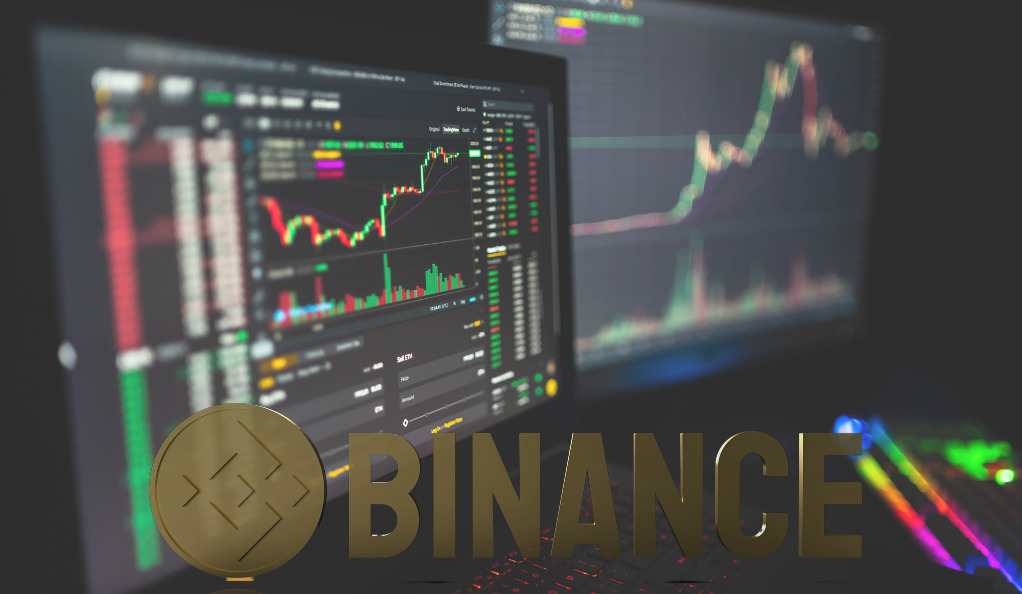If you’re a cryptocurrency enthusiast looking to diversify your investment portfolio, Litecoin can be an intriguing addition. As one of the earliest altcoins, Litecoin has gained recognition and popularity for its unique features and potential for growth. In this comprehensive guide, we’ll walk you through the essential aspects of portfolio management specifically tailored for Litecoin investors. Whether you’re a novice or experienced in the world of cryptocurrencies, this guide aims to provide valuable insights to help you make informed investment decisions.

Understanding Litecoin: A Brief Overview
Litecoin, often referred to as the “silver to Bitcoin’s gold,” was created in 2011 by Charlie Lee. It shares many similarities with Bitcoin but also boasts faster transaction confirmations and a different hashing algorithm called Scrypt. This unique combination of features positions Litecoin as a viable alternative for both transactional use and investment purposes.
In a market dominated by thousands of cryptocurrencies, understanding the fundamentals of Litecoin is crucial. Litecoin’s Scrypt algorithm enables faster block generation, resulting in quicker transaction confirmations compared to Bitcoin. This characteristic makes Litecoin more suitable for everyday transactions and small purchases. Moreover, the total supply of Litecoin is capped at 84 million coins, four times that of Bitcoin, which can potentially mitigate the effects of inflation and scarcity concerns. The familiarity of Litecoin’s technology, its active development community, and its integration with various payment processors contribute to its widespread adoption and utility.
Evaluating the Current Market Trends
Before diving into Litecoin investment, it’s crucial to analyze the current market trends. Cryptocurrency markets can be highly volatile and influenced by various factors, including regulatory changes, technological advancements, and macroeconomic developments. By staying informed about market dynamics, you can make well-informed decisions that align with your investment objectives.
Market analysis involves studying historical price trends, monitoring trading volumes, and assessing the sentiment of market participants. Analyzing Litecoin’s price movements in relation to broader market trends can help you identify potential entry and exit points. Additionally, keeping an eye on news and announcements related to Litecoin, such as software updates or partnerships, can provide insights into the asset’s future prospects.
The Importance of Diversification
Diversification is a fundamental principle of portfolio management. Spreading your investments across different asset classes, including various cryptocurrencies, can help mitigate risks associated with market fluctuations. By allocating a portion of your portfolio to Litecoin, you can potentially benefit from its unique features while reducing the overall risk exposure.
Diversifying your cryptocurrency portfolio involves more than just owning multiple digital assets. It also entails considering different categories within the crypto space, such as privacy coins, utility tokens, and stablecoins. Each category serves a specific purpose and exhibits distinct characteristics in terms of risk and potential returns. Including Litecoin in your diversified portfolio can enhance its resilience against market volatility, as Litecoin’s performance may not always correlate with that of other cryptocurrencies.
Setting Clear Investment Goals
Before investing in Litecoin, it’s essential to define clear investment goals. Are you looking for short-term gains, long-term appreciation, or a mix of both? Establishing well-defined goals will guide your investment strategy and help you stay focused on your desired outcomes.
Setting investment goals involves assessing your risk tolerance, financial objectives, and time horizon. For instance, if you’re seeking capital preservation and gradual growth, you might allocate a higher percentage of your portfolio to Litecoin as a long-term investment. On the other hand, if you’re comfortable with higher risk and potential short-term gains, you could allocate a smaller portion of your portfolio to capture shorter-term price fluctuations.
Risk Assessment and Mitigation Strategies
Investments always carry an inherent level of risk. As a Litecoin investor, it’s crucial to assess potential risks and develop effective mitigation strategies. This may involve setting stop-loss orders, diversifying further, or staying updated on market news and trends.
One effective risk mitigation strategy is diversification beyond cryptocurrencies. While Litecoin is an exciting asset, spreading your investments across traditional assets like stocks, bonds, and real estate can provide a buffer against extreme cryptocurrency market volatility. Additionally, staying informed about market trends and news is essential for identifying potential risks early. For instance, regulatory changes or security breaches in the broader cryptocurrency space can impact Litecoin’s value.
Building Your Litecoin Portfolio

Allocating Funds Strategically
Determining the allocation of funds to Litecoin within your portfolio requires careful consideration. Financial experts often recommend allocating a percentage that aligns with your risk tolerance and investment goals.
Strategic allocation involves assessing your overall investment portfolio and determining the appropriate proportion to allocate to Litecoin. A common approach is to allocate a portion based on your risk tolerance, typically ranging from 1% to 10% of your total portfolio. This allocation can be adjusted based on your assessment of Litecoin’s growth potential, market conditions, and your individual financial circumstances.
Exploring Different Investment Methods
Investors can acquire Litecoin through various methods, including exchanges, over-the-counter (OTC) platforms, and even mining. Each method has its pros and cons, and understanding these options is vital for making informed investment decisions.
- Cryptocurrency Exchanges: Exchanges like Coinbase, Binance, and Kraken allow you to purchase Litecoin using fiat currency or other cryptocurrencies. This method is user-friendly and suitable for beginners.
- Over-the-Counter (OTC) Platforms: OTC platforms facilitate large trades between buyers and sellers directly. OTC trading is preferred by institutional investors and high-net-worth individuals seeking to execute substantial transactions without causing significant price fluctuations.
- Mining: While individual mining may not be as profitable as it once was, joining a mining pool can provide a steady stream of Litecoins. Mining involves contributing computing power to validate transactions and secure the network.
Each method has its considerations, such as fees, security, and convenience. Choosing the most suitable method depends on your investment preferences, available resources, and desired level of involvement.
Staying Informed: Tracking Litecoin Performance
To make informed investment decisions, staying informed about Litecoin’s performance is crucial. Utilize reliable cryptocurrency tracking platforms and news sources to monitor price movements, market sentiment, and potential catalysts.
Keeping track of Litecoin’s performance involves more than simply checking its current price. Consider the following strategies to stay well-informed:
- Cryptocurrency Tracking Platforms: Utilize platforms like CoinMarketCap, CoinGecko, or TradingView to monitor Litecoin’s price charts, historical data, and trading volumes. These platforms provide valuable insights into market trends and price movements.
- News Aggregators: Stay updated on the latest news and developments related to Litecoin by following reputable cryptocurrency news websites and social media accounts. News can impact market sentiment and drive short-term price fluctuations.
- Community Engagement: Join online cryptocurrency communities, forums, and social media groups dedicated to Litecoin. Engaging with fellow enthusiasts can provide valuable insights, perspectives, and real-time updates.
- Technical Analysis: Learn the basics of technical analysis to interpret price charts and identify potential trends. Technical analysis can help you make more informed entry and exit decisions.
By combining these strategies, you can gain a holistic understanding of Litecoin’s performance and make investment decisions based on a comprehensive view of the market.
The Role of Technology and Innovation
The cryptocurrency landscape is characterized by rapid technological advancements. Stay attuned to developments within the Litecoin ecosystem, such as software upgrades and partnerships, as these can significantly impact the asset’s value and utility.
Litecoin’s technology has evolved over the years to address scalability and efficiency concerns. One notable innovation is the implementation of the Lightning Network, a second-layer solution that enables faster and cheaper transactions. The Lightning Network leverages Litecoin’s blockchain to facilitate instant micropayments, making it a valuable tool for enhancing the cryptocurrency’s use in everyday transactions.
Moreover, Litecoin’s active development community continuously explores improvements and upgrades. By keeping an eye on upcoming changes and enhancements, you can anticipate how these developments might influence Litecoin’s price and adoption.
Tax Implications of Litecoin Investments
Tax regulations surrounding cryptocurrencies vary by jurisdiction. It’s essential to understand the tax implications of your Litecoin investments and comply with reporting requirements to avoid potential legal complications.
Cryptocurrency transactions can trigger tax obligations, including capital gains tax and income tax. Some key points to consider regarding the tax implications of Litecoin investments include:
- Tax Classification: Determine how tax authorities classify Litecoin – as a currency, property, or commodity. Different classifications may lead to varying tax treatment.
- Capital Gains Tax: Profits from selling Litecoin may be subject to capital gains tax. The rate depends on factors such as your holding period and your jurisdiction’s tax laws.
- Record Keeping: Maintain accurate records of your Litecoin transactions, including purchase prices, sale prices, and dates. Detailed records will facilitate accurate tax reporting.
- Reporting Obligations: Be aware of your jurisdiction’s tax reporting requirements for cryptocurrency transactions. Failure to report could result in penalties.
Consulting a tax professional with expertise in cryptocurrency taxation is advisable to ensure compliance with applicable tax laws and regulations.
Long-Term vs. Short-Term Investment Strategies
Consider your investment horizon when strategizing your approach to Litecoin. Long-term investors may opt for a “buy and hold” strategy, while short-term traders might engage in more active buying and selling to capitalize on price fluctuations.
Long-Term Investment Strategies
Long-term investment involves acquiring Litecoin with the intention of holding it for an extended period, typically several years. This approach is based on the belief that Litecoin’s value will appreciate over time. Some considerations for long-term investors include:
- Fundamental Analysis: Research Litecoin’s technology, adoption, and utility to assess its long-term growth potential.
- Patience: Long-term investors must be patient and willing to endure market volatility without making impulsive decisions.
- HODLing: The term “HODL” originated from a misspelled word (“hold”) in a forum post and has come to symbolize a steadfast commitment to holding cryptocurrencies through price fluctuations.
Short-Term Investment Strategies
Short-term trading involves capitalizing on price movements over shorter timeframes, such as days, weeks, or months. Traders aim to profit from both upward and downward price trends. Some considerations for short-term traders include:
- Technical Analysis: Short-term traders often rely on technical analysis to identify patterns and trends in price charts.
- Risk Management: Implement risk management strategies, such as setting stop-loss orders, to limit potential losses.
- Market Timing: Timing the market is crucial for short-term traders. Entry and exit points are determined based on short-term price movements.
Whether you choose a long-term or short-term strategy depends on your risk tolerance, investment goals, and familiarity with trading concepts.
Navigating Volatility: Tips for Success
Volatility is a hallmark of the cryptocurrency market. To navigate this volatility successfully, consider maintaining a diversified portfolio, avoiding impulsive decisions, and leveraging risk management techniques.
Diversification
Diversifying your cryptocurrency portfolio can help mitigate the impact of extreme price swings. By holding a variety of assets, including Litecoin and other cryptocurrencies, you can offset potential losses from one asset with gains from another.
Risk Management
Risk management is essential to protect your capital from substantial losses. Some risk management techniques include setting stop-loss orders, allocating only a portion of your portfolio to high-risk assets like Litecoin, and avoiding excessive leverage.
Emotional Discipline
Emotional discipline is crucial in volatile markets. Avoid making impulsive decisions based on fear or greed. Stick to your investment strategy and resist the urge to make drastic changes during periods of extreme price fluctuations.
Stay Informed
Staying informed about market developments and news can help you anticipate potential price movements. However, avoid reacting impulsively to short-term news events that may not have a lasting impact on Litecoin’s long-term value.
Secure Storage: Protecting Your Litecoin Assets
Safeguarding your Litecoin holdings is paramount. Explore secure wallet options, such as hardware wallets or cold storage solutions, to protect your assets from potential security breaches.
Hardware Wallets
Hardware wallets are physical devices that store your Litecoin offline, making them highly secure against online threats. They generate and store private keys offline, reducing the risk of hacking and unauthorized access.
Cold Storage
Cold storage involves keeping your Litecoin offline, disconnected from the internet. This method prevents online attacks and hacking attempts. Paper wallets and offline computers are examples of cold storage solutions.
Software Wallets
Software wallets are applications that you install on your computer or mobile device. While convenient, they are more susceptible to online threats compared to hardware wallets.
Exchange Wallets
Leaving your Litecoins on a cryptocurrency exchange wallet exposes them to potential security breaches. Consider transferring your holdings to a more secure wallet under your control.
Rebalancing Your Portfolio Over Time
Periodically reassess and rebalance your Litecoin portfolio to ensure that it aligns with your investment goals and risk tolerance. Market conditions and your personal financial situation may warrant adjustments to your portfolio allocation.
Regular Assessment
Regularly review your Litecoin holdings in the context of your overall investment portfolio. If Litecoin’s price movement significantly deviates from your initial allocation, consider rebalancing.
Market Conditions
Adjust your portfolio based on prevailing market conditions. During periods of heightened volatility or significant price movements, rebalancing can help you maintain your desired risk exposure.
Personal Goals
Reevaluate your investment goals and objectives over time. If your financial situation or risk tolerance changes, consider adjusting your Litecoin allocation accordingly.
Conclusion
Investing in Litecoin offers exciting opportunities for portfolio diversification and potential financial growth. By understanding the unique attributes of Litecoin, staying informed about market trends, and adhering to sound portfolio management strategies, you can navigate the dynamic world of cryptocurrencies with confidence.
FAQs
Litecoin can be suitable for beginners due to its user-friendly nature and historical significance. However, thorough research and understanding of the cryptocurrency market are essential before investing.
Litecoin’s price volatility is influenced by factors such as market sentiment, technological developments, regulatory changes, and macroeconomic trends.
Yes, Litecoin can be mined, but profitability depends on factors like mining hardware, electricity costs, and market conditions.
Opt for reputable hardware wallets or well-established software wallets with a strong track record of security.
Litecoin serves as a decentralized digital currency, facilitating secure and efficient peer-to-peer transactions on its blockchain.
Bitcoinnewsmagazine is committed to providing impartial and reliable insights into cryptocurrency, finance, trading, and stocks. It's important to note that we do not provide financial advice, and we strongly encourage users to conduct their own research and due diligence.
Read More

